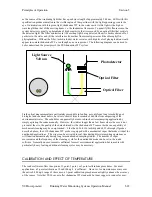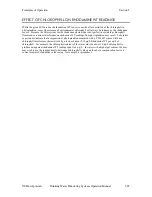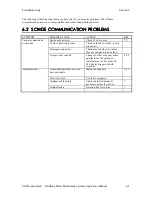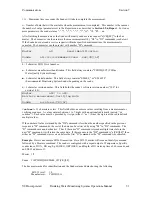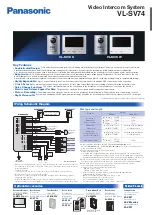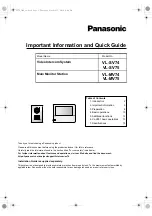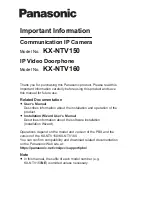
Principles of Operation
Section 5
YSI Incorporated Drinking Water Monitoring Systems Operation Manual
5-19
2.
Accurately transfer 5.0 mL of the Rhodamine WT solution into a 1000 mL volumetric flask. Fill the
flask to the volumetric mark with deionized or distilled water and mix well to produce a solution that is
approximately 100 mg/L of Rhodamine WT. Transfer this standard to a glass bottle and retain it for
future use.
3.
Accurately transfer 5.0 mL of the solution prepared in the above step to a 1000 mL volumetric flask and
then fill the flask to the volumetric mark with deionized or distilled water. Mix well to obtain a solution,
which is 0.5 mg/L in water (a 200:1dilution of the concentrated solution).
4.
Store the concentrated standard solution produced in (6) above in a glass bottle in a refrigerator to retard
decomposition. The dilute standard prepared in the previous step should be used within 24 hours of its
preparation.
When rhodamine standards are required in the future, perform another dilution of the concentrated rhodamine
solution after warming it to ambient temperature. Our experience has indicated that the concentrated solution
that has been kept at cold temperatures is much more stable than the dilute solution stored at room
temperature.
It is well known that the intensity of the fluorescence of many dyes shows an inverse relationship with
temperature. The effect must also be accounted for when “calibrating” the YSI chlorophyll sensor with
rhodamine WT. Enter the calibration value from the table below corresponding to the temperature of the
standard.
WARNING: The “Chl Tempco” factor in the Advanced|Sensor menu, MUST BE SET TO ZERO,
when calibrating with Rhodamine WT.
Table. Approximate algal chlorophyll equivalent of 0.5 mg/L Rhodamine WT as a function of temperature.
T, C
ug/L Chl to
Enter
T, C
Ug/L Chl to
Enter
30 100
18 122
28 103
16 126
26 106
14 131
24 110
12 136
22 113
10 140
20 118
8 144
REMEMBER: The use of rhodamine WT for “calibration is only an approximation. To assure
accurate readings from the 6025 sensor, the user must relate the field fluorescence readings to data
from extractive analysis samples as described above. YSI does not provide an accuracy specification for
chlorophyll due to these limitations.
EFFECT OF TEMPERATURE ON READINGS
While the effect of temperature on the chlorophyll sensor itself is very small, YSI experiments have
indicated that the fluorescence of phytoplankton suspensions can show significant temperature dependence.
For example, the apparent chlorophyll content of our laboratory test samples of algae increased from 185 to
226 µg/L when the temperature was dropped from 21 °C to 1 °C even though no change in phytoplankton
content took place. In the absence of compensation, this effect would obviously result in errors in field
chlorophyll readings if the site temperature were significantly different from the calibration temperature.
This temperature error can be reduced by employing a chlorophyll temperature compensation routine (“Chl
tempco”) resident in the sonde software under the Advanced|Sensor menu.
Содержание 600DW-B
Страница 3: ......
Страница 239: ...Principles of Operation Section 5 YSI Incorporated Drinking Water Monitoring Systems Operation Manual 5 26...
Страница 251: ...Warranty and Service Information Section 8 YSI Incorporated Drinking Water Monitoring Systems Operations Manual 8 4...
Страница 259: ...Required Notice Appendix B YSI Incorporated Drinking Water Monitoring Systems Operations Manual B 2...
Страница 264: ...EMC Performance Appendix D YSI Incorporated Drinking Water Monitoring Systems Operations Manual D 2...
Страница 268: ...Specifications Appendix E YSI Incorporated Drinking Water Monitoring Systems Operations Manual E 4...
Страница 297: ......



















